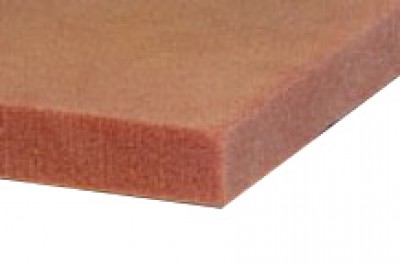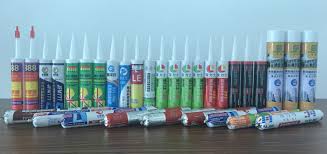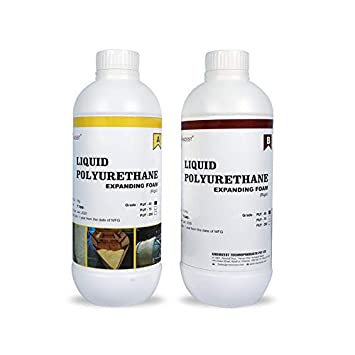Polyurethane Foam

Polyurethane foam is a polymer that is derived from a variety of materials. It is used for a wide variety of applications, and it is an important component of many products. Among its uses are car parts, furniture, and other products that require durability. This material is also environmentally friendly and provides a host of properties and benefits.
Properties
Polyurethane foam is a cellular-structured synthetic material that provides cushioning and impact resistance. The properties of polyurethane foams depend on the type of foam and its manufacturing process. There are rigid and flexible foams available. Rigid foams are typically placed between refrigerators and freezers, while flexible foams are used in automotive seat cushions.
A variety of additives can be added to the polyurethane polymer to improve its properties. Some of these materials include chitosan and calcium carbonate. Chitosan enhances the coating effect, while calcium carbonate helps to increase the strength of the material.
When considering the different types of polyurethanes, one must first look at their morphology. Flexible polyurethane foams are composed of open cells and permeable structures, while rigid polyurethanes are dense and densely packed.
Different polyols are used to make different types of flexible and rigid polyurethane foams. These can be polyester, polyether or polypropylene polyols. Those containing polyester tend to be more susceptible to biodegradation.
One of the most important properties of polyurethane foams is its resilience. This is measured by its bounce height of a steel ball. Other important polyurethane foam properties include compressibility, elongation at break, and air permeability.
Traditionally, polyurethane foams are produced by the reaction of di- or tri-isocyanate with polyol. However, there are other additives such as amines and surfactants that can be used. It is possible to replace petroleum-based polyols with renewable polyols to produce foams that have similar physical and mechanical properties.
Although polyurethane foams are relatively environment-friendly, they can release harmful gases. They are also a combustible material. Therefore, strict regulations must be observed when producing these products.
Polyurethane foam is used to provide insulation and protection in a wide variety of applications. They are found in household furnishings and construction, as well as in clothing and technical fiber ropes.
Densities
Polyurethane foam is a polymeric material with a range of properties. It has outstanding elasticity, shock absorption, and sound absorption properties. These features have led to the use of polyurethane foam in a variety of fields.
Densities of polyurethane foams are generally considered as a measure of the amount of pounds of material per cubic foot. Foams of different densities have different properties.
The mechanical properties of polyurethane foams vary depending on the density. Rigid polyurethane foams have lower elasticity, whereas soft polyurethane foams have high elasticity. High-density foams are used in orthopaedics to simulate bone structures. Various studies have been performed to study the relationship between the cell openness and sound absorption.
This research compared different types of densities of polyurethane foam to determine their impact absorption capacities. A mathematical model of crashworthiness was developed. In addition, the dynamic properties of the foaming process were studied.
Two commercial polyurethane foams of various densities were examined in a one-dimensional uniaxial strain impact experiment. An equation was constructed for the stress-strain curve. Afterwards, a general failure surface was generated.
The effect of fillers on heat flux density of a polyurethane-polystyrene porous composite was also investigated. The composite expanded using a gas vaporization process inside EPS beads. RPUF blends Polyurethane Foam with polyester SPUFs showed better mechanical properties, while a blend with polyether SPUFs had lesser mechanical properties.
Several experimental studies have been conducted to evaluate the crashworthiness of polyurethane foam. Several features are investigated such as the strength of the structure, the energy absorption capability, and the crush force efficiency.
One of the most important aspects of the crashworthiness of polyurethane was the impact energy. Using the impulse-momentum theory, the energy absorption capacity of the foam was calculated.
Applications
Polyurethane foams are a versatile material that is used in a variety of applications. They are often seen in automobiles and military aircrafts. These foams are also used in the manufacturing industry and the construction sector. Some examples of these applications are rigid foams placed between freezers and metals, flexible foams used in seat cushions, carpets, and elastomeric flooring.
There are several different forms of PUFs, including molded and reaction injection molding. Rigid PUFs are the most common. Flexible PUFs are usually made by mixing diisocyanates and polyols. The properties of these foams vary depending on the polyol content.
Rigid PUFs with nanostructured additives exhibit high mechanical resistance. They have a relatively low heat release rate and high oxygen index. Furthermore, they can be filled with phosphorus flame retardants and have a good thermal insulation property.
Several other types of foams are used in different industrial and residential settings. For instance, flexible polyurethane foam is used in automotive seat cushions and mattresses. Similarly, rigid PU foams are often used in refrigerators for thermal insulation.
Unlike many other materials, the density of rigid PUFs can be varied. This allows them to be placed between metals or plastic sheets to create a strong, solid structure. However, they are also quite costly.
Despite their excellent performance, polyurethane foams face an inevitable turning point in the near future. This is due to strict regulations, such as the European Union’s ban on toxic gases that are emitted by PU.
One possible solution for this issue is the replacement of petroleum-based polyols with renewable polyols. Renewable polyols are derived from biomass feedstocks. By replacing the petroleum-based polyols with a renewable polyol, the same foam properties can be obtained.
Production process
Polyurethane foam is a type of foam rubber that is made from the chemical reaction of polyols and diisocyanates. It is a porous synthetic material that offers thermal insulation and high compressive strength. This kind of foam is often used in furniture, seat cushions, and acoustic dampers.
The chemistry of polyurethane foam is controlled by several processes. First, the components are mixed to form a mixture of additives. Second, a blowing agent is added to create a gas. The rate of gas generation is controlled by the catalyst. A third process is a curing process that produces a foamed polymer system.
Another step is the formation of a porous structure. This is done by applying compressions to the foam specimen. Afterwards, the specimen is cut into layers perpendicular to its growth axis.
An elongation measurement is also performed during this stage. In addition, a tensile strength test is conducted to measure the force required to break the foam.
A final measurement is carried out after several thousand cycles at a specified rate. The resilience of the foam is expressed as the ratio of rebound height to starting height.
When producing flexible PUFs, aromatic diisocyanates can be formulated into different levels of rigidity. Aliphatic diisocyanates, on the other hand, are better suited for elastomeric coatings. These types of polyurethanes can be formulated into low water absorption rigid Polyurethane Foam PUFs that have the potential to be used in boat construction.
Another factor that affects the properties of a foam is its density. This is influenced by the presence of EG. Elongation and tear strength are reduced when the equivalent weight of polyol is increased. If the foam is prepared with liquefied wheat straw polyol, its density is similar to that of a glycol-based foam.
Environmental impact
Polyurethane foam is a popular choice for insulation. It is less bulky and lightweight compared to other insulating materials. But its manufacturing process does create waste, and this material needs effective recycling technologies to be re-used.
Polyurethane foam can be recycled and reused in different industries. When produced, it contains less than 2 percent of the total plastic waste on the planet. In addition, polyurethane products are designed to meet exact specifications. They are used in a variety of applications, including air-sealing, building construction, and transportation.
The use of effective recycling technologies reduces the environmental impact of polyurethane foam waste disposal. This allows the re-use of this waste material and also saves natural resources.
During production, a variety of contaminants are present in polyurethane foam scrap. These contaminants may include wood, metal, and other materials. However, by separating the contaminants, the waste can be easily re-used.
Moreover, effective recycling techniques increase the amount of raw material resources available for foam production. This makes the manufacturing process more cost-effective.
The polyurethane industry is committed to reducing the environmental impacts of its products. They have launched various initiatives, such as developing systems that feature 4th generation HFO foaming agents. These systems have excellent insulation performance and are not aggressive to the ozone layer.
In addition, manufacturers of polyurethane foams are supporting the use of best practices. One example is the Spray Polyurethane Foam Alliance. Members of this group are made up of contractors, distributors, and manufacturers.
The alliance recently released a new Life Cycle Assessment Use Phase Analysis report that measures the cumulative energy demands and global warming potential of spray foam insulation. It compares the environmental impacts of spray foam insulation to those of fiberglass insulation.



